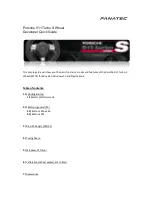
•
You are required by law to properly use safety seats for infants and
toddlers in the U.S. and Canada.
•
Many states and provinces require that small children use approved
booster seats until they reach age eight, a height of 4 ft 9 in
(1.45 meters) tall, or 80 lb (36 kg). Check your local and state or
provincial laws for specific requirements regarding the safety of
children in your vehicle.
•
When possible, always properly restrain children twelve (12) years of
age and under in a rear seating position of your vehicle. Accident
statistics suggest that children are safer when properly restrained in
the rear seating positions than in a front seating position.
Recommendations for attaching child safety restraints for children
Restraint
Type
Child
Weight
Use any attachment method as indicated
below by “X”
LATCH
(lower
anchors
and
top
tether
anchor)
LATCH
(lower
anchors
only)
Safety
belt
and
top
tether
anchor
Safety
belt and
LATCH
(lower
anchors
and top
tether
anchor)
Safety
belt
only
Rear
facing
child seat
Up to
48 lb
(21 kg)
X
X
Forward
facing
child seat
Up to
48 lb
(21 kg)
X
X
X
Forward
facing
child seat
Over
48 lb
(21 kg)
X
X
WARNING:
Air bags can kill or injure a child in a child seat.
NEVER place a rear-facing child seat in front of an active air
bag. If you must use a forward-facing child seat in the front seat, move
the vehicle seat all the way back. When possible, all children age 12
and under should be properly restrained in a rear seating position. If
all children cannot be seated and restrained properly in a rear seating
position, properly restrain the largest child in the front seat.
2010 Milan
(mln)
Owners Guide, 1st Printing
USA
(fus)
Seating and Safety Restraints
150
















































